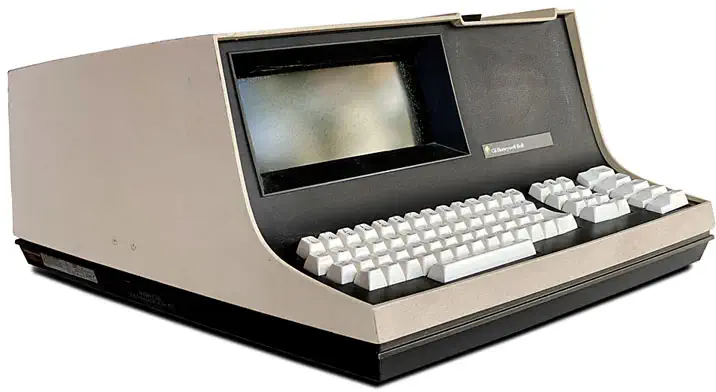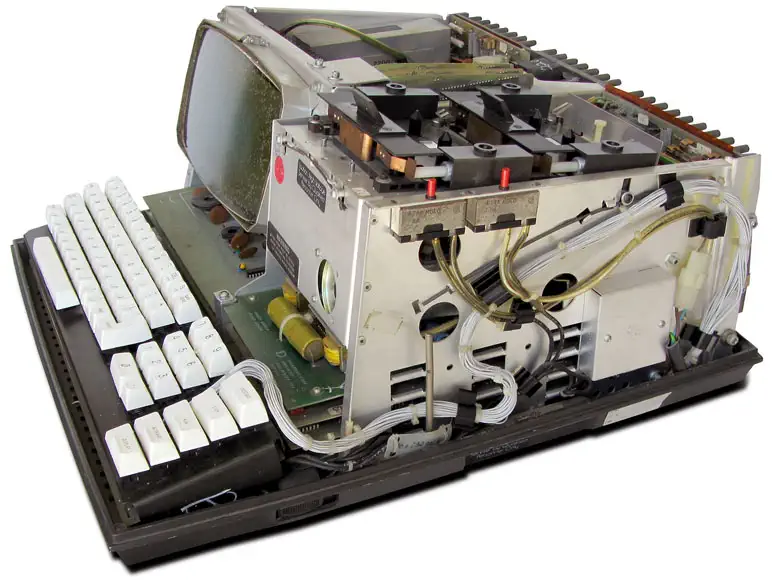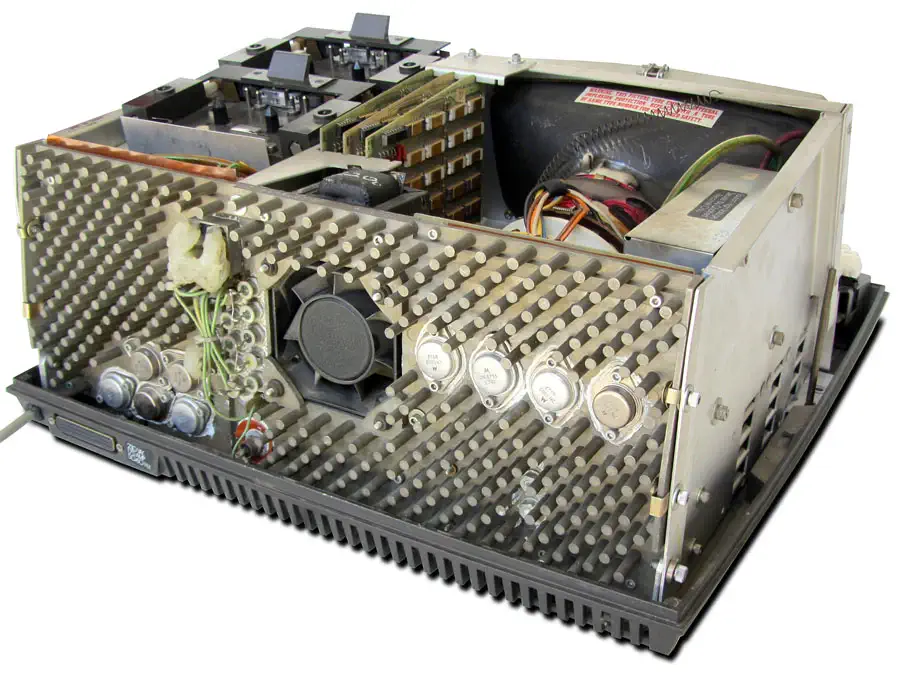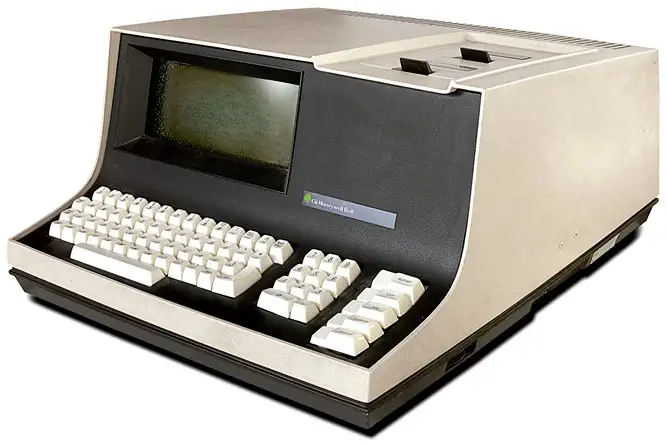DataPoint 2200
The DataPoint 2200 was released in 1970 by the Computer Terminal Corporation (CTC). The computer was designed by Phil Ray, and Gus Roche, the founders of the CTC. It was the successor of the DataPoint 3300, which was really nothing more than a terminal. The 3300 used 8-bit shift registers instead of RAM, which was too expensive at the time).
The DataPoint was marketed as a cost-efficient terminal to connect to a variety of mainfraimes. It could load various terminal emulations from tape; other terminals had these emulations in ROM, making them less flexible.
Dave Gust, a sales person for the CTC, realized that the DataPoint 2200 could also function as a stand-alone computer and marketed it to Pillsbury Foods as such.
The DataPoint 2200 uses a discrete logic implementation of the Intel 8008 instructionset. This instruction set inspired the intel 8080 and later the x86 instruction sets used in the IBM PC's and PC clones. The original design of the computer had a single-chip 8-bit CPU, to be made by either Intel or Texas Instruments. Texas Instruments could not produce a reliable chip, and Intel was unable to meet the CTC deadline. CTC continued to build the processor out of TTL chips which gave it a speed advantage over MOS circuits. Intel continued to develop the 8008 architecture which became the Intel 8008 8-bit CPU. The CTC design was aa 1-bit architecture, using a serial pipeline, which made it faster than the Intel 8008.
The DataPoint 2200 came with 2KByte of RAM, which was expandable to 16K. For storage it used 2 tape drives, and an optional Shugart floppy drive was available. Display was limited to 80x12 text.




RAM max: 16kB Sound Chip none Sound none Display Chip none Display 80x12 Text Only Best Text 80x12 Best Color none Best Graphics Text Only Sprites none System OS Datapoint OS Storage 2 tape drives
optional Shugart Floppy Disk Drive.

